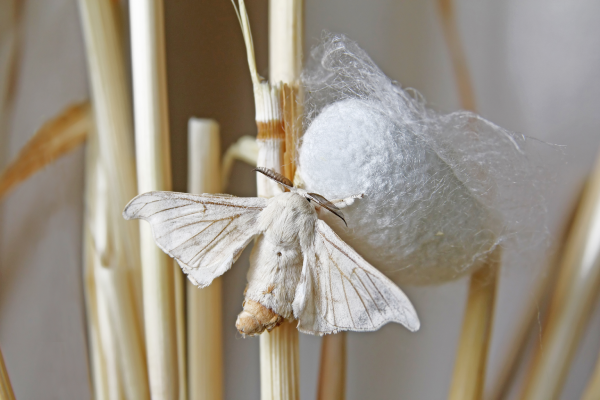
Silk is produced from the threads of cocoons spun by silkworms on their journey to becoming a silk moth. Each cocoon is made from a single thread that can be nearly a mile long and is about the size of a cotton ball.
While different insects can produce silk, by far the largest quantity comes from the domesticated, home-farmed Bombyx mori moth that feeds on mulberry leaves. The largest producer of silk is China, followed by India, regions where the climate is best and the workforce is skilled.
To obtain a continuous unbroken thread, the cocoons undergo a steaming process before the silkworm metamorphosis into a silk moth. Silkworms and moths have a naturally limited life span, so to maintain the sericulture (silk production) cycle, a percentage of cocoons are allowed to transition completely and for the silk moth to create a hole and emerge from the cocoon.
Stronger than Steel
While silk is stronger than steel, individual silk threads are too thin for most uses, so several are twisted together in a process called throwing. Different yarns can be produced by this method according to the number of threads used and the direction of the twist.
The common term “peace silk” refers to silk, such as spun, for which the much shorter threads from the broken cocoons are twisted together.
For thousands of years, silk was woven by hand but today production is mechanised. The different processes involved, the fineness and number of threads required, the inspection and finishing of the fabric still make its manufacture a slow and fairly labour-intensive process. Alongside its inherent unique characteristics, these factors contribute to the higher cost of many silk fabrics compared with man-made alternatives.




